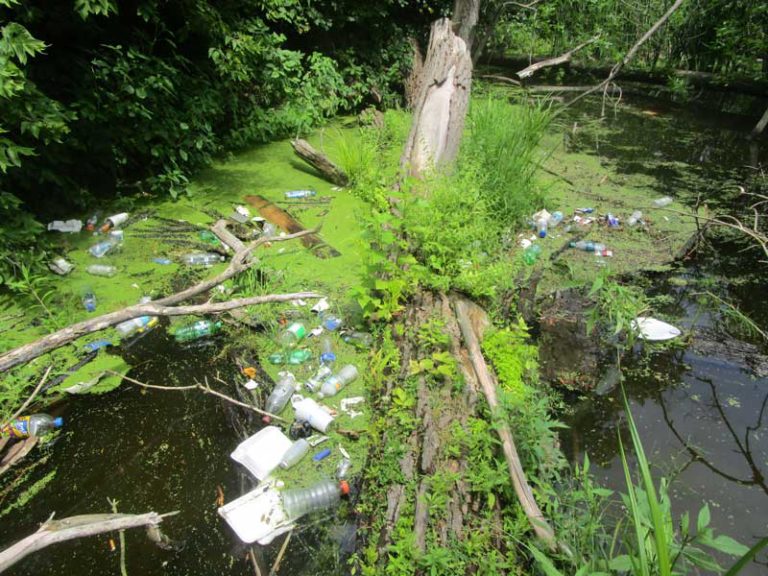
By Kathlean Wolf
Northside News
On Oct. 20 State Representative Melissa Sargent and her office staff joined volunteers from Wild Warner to clean up Castle Creek. One week later, 20 United Way and AmeriCorps volunteers assisted in another clean up and more than 300 gallons of trash were removed from the park, woods and pond.
It takes a lot of work to keep the park clean. Many volunteers from many organizations put in many hours of labor. In the last edition of the Northside News, I mentioned some of the reasons trash is such an issue. In this second of three articles on issues in our watershed, I hope to provoke some thought on the social justice aspect of upstream waste and downstream consequences.
Those who live upstream — literally, as in some Northside neighborhoods, or figuratively, as in the financial and power advantage of the United States compared to, for example, Haiti — are prone to have their undesired consequences land on the front steps of those who have little or no power to deal with the results.
The apartments of Brentwood, some of the last affordable housing in Madison, were built on land that is ill-suited for their design. Foundations are sunk below the water line, and basements are frequently flooded and permanently damp. If climate change predictions for Wisconsin are correct, floods like the ones we experienced in 2016 will become common, one day presenting our neighborhood with the need to make some extremely expensive adaptations.
Some areas of the Northside are similarly disadvantaged when it comes to pollution and stormwater debris. Streets with single-family homes have lower foot traffic, fewer residents and, obviously, fewer trash cans. Trailsway Street and adjacent streets are lined with apartment buildings. More people in a small area means the occasional stray bottle seen on any “upstream” street is multiplied many times over. Assuming the same number of stray papers blown out of a trash can during collection, and the same low percentage of people who are careless enough to litter, there will always be more litter in an area with more people and more trash cans.
Add to that the fact that the trash from every other neighborhood comes downhill, and the streets and yards with apartment buildings require a lot more upkeep. Yet the perception is that the people who live here do not care about litter. We do. Adding in the trash that arrives in our area, I suspect the people living in apartments often end up putting forth more effort than anyone upstream could imagine.
None of this is meant to point a finger of blame at those who live beyond the reach of basement floods. Especially on the Northside, there’s an awareness that we all need to work across divisions of class, race, gender and politics to achieve the goals we set for ourselves as a community. My hope here, following a presidential election that many of us regard as tragic and frightening in its divisiveness, is that we can come to understand each other better. In the third installment on this topic, look for ideas on how we can all work together to reduce flooding and improve water quality — and make our neighborhoods more beautiful in the process.